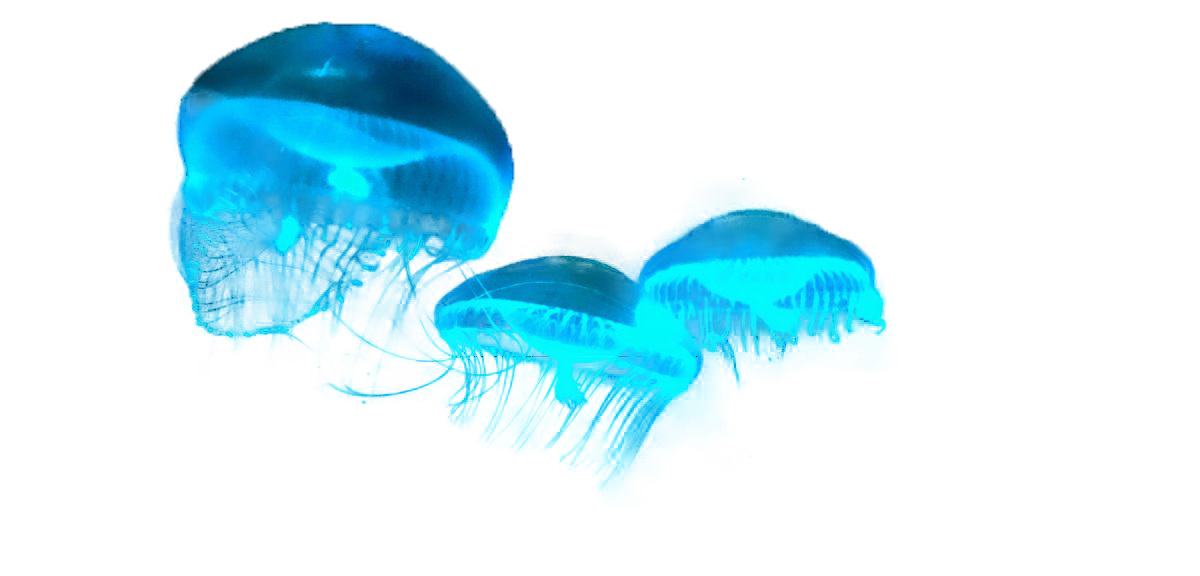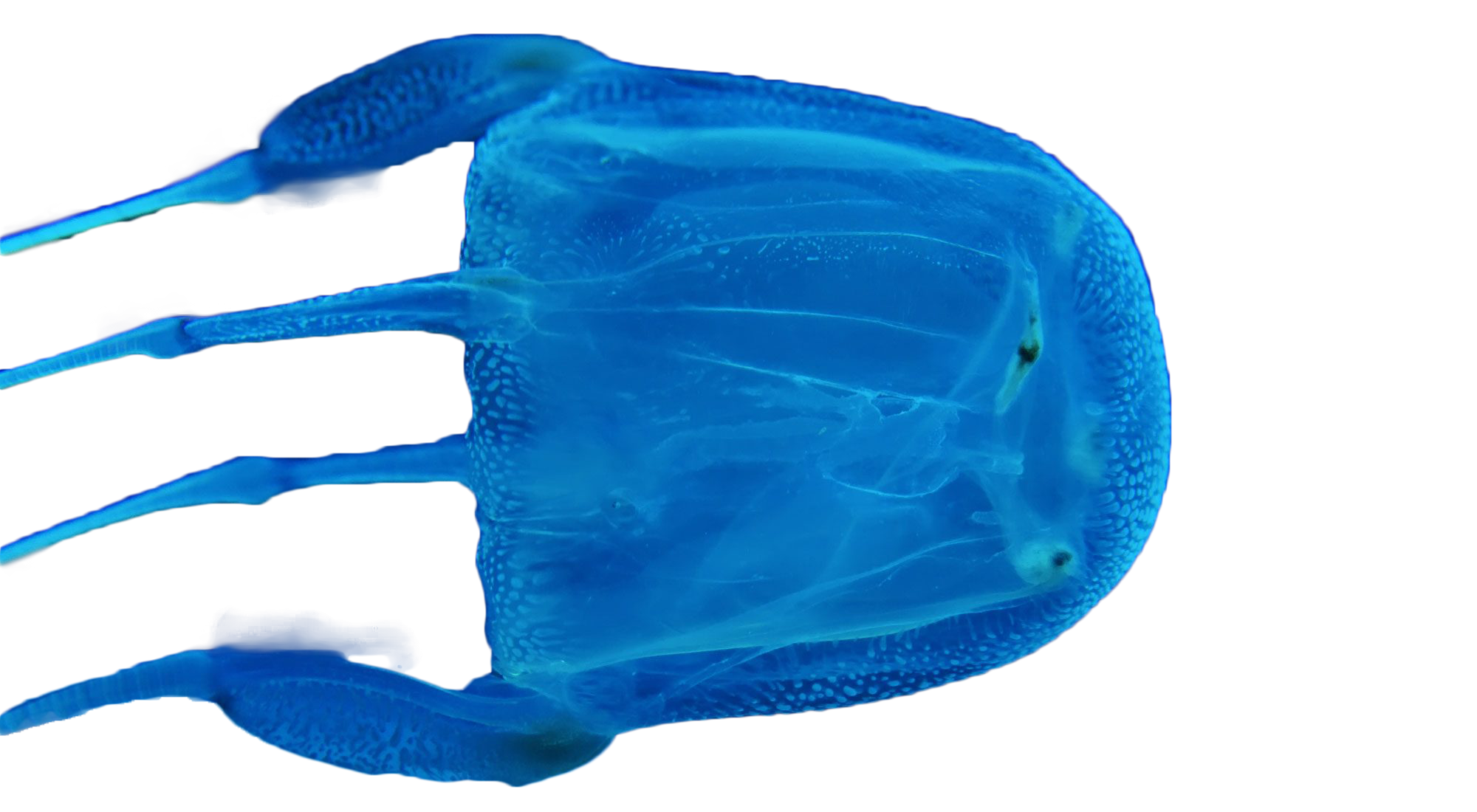Predator & Prey
Predation
Other species of jellyfish are among the most common and important jellyfish predators. Sea anemones may eat jellyfish that drift into their range. Other predators include tunas, sharks, swordfish, sea turtles and penguins. Jellyfish washed up on the beach are consumed by foxes, other terrestrial mammals and birds. In general however, few animals prey on jellyfish; they can broadly be considered to be top predators in the food chain. Once jellyfish have become dominant in an ecosystem, for example through overfishing which removes predators of jellyfish larvae, there may be no obvious way for the previous balance to be restored: they eat fish eggs and juvenile fish, and compete with fish for food, preventing fish stocks from recovering.
Bioluminescence

It is estimated that about 50% of jellyfish are bioluminescent. There are many different types represented, including siphonophores (related to the Portuguese man-o-war), medusae, sea pens and other soft corals, and ctenophores (comb jellies). The greatest diversity of luminescent jellyfish occurs in the deep sea, where just about every kind of jellyfish is luminescent. Most jellyfish bioluminescence is used for defense against predators. Jellyfish such as comb jellies produce bright flashes to startle a predator, others such as siphonophores can produce a chain of light or release thousands of glowing particles into the water as a mimic of small plankton to confuse the predator. Others produce a glowing slime that can stick to a potential predator and make it vulnerable to its predators. Some jellyfish can release their tentacles as glowing decoys. So you see that there are many strategies for using bioluminescence by jellyfish.
Some deep-sea jellyfish such as the comb jellies, which can get as large as a basketball, are in some cases so fragile that they are almost impossible to collect intact.
Also spectacular are siphonophores, some of which can reach several meters in length. Siphonophores deploy many tentacles like a gill net casting for small fish.
